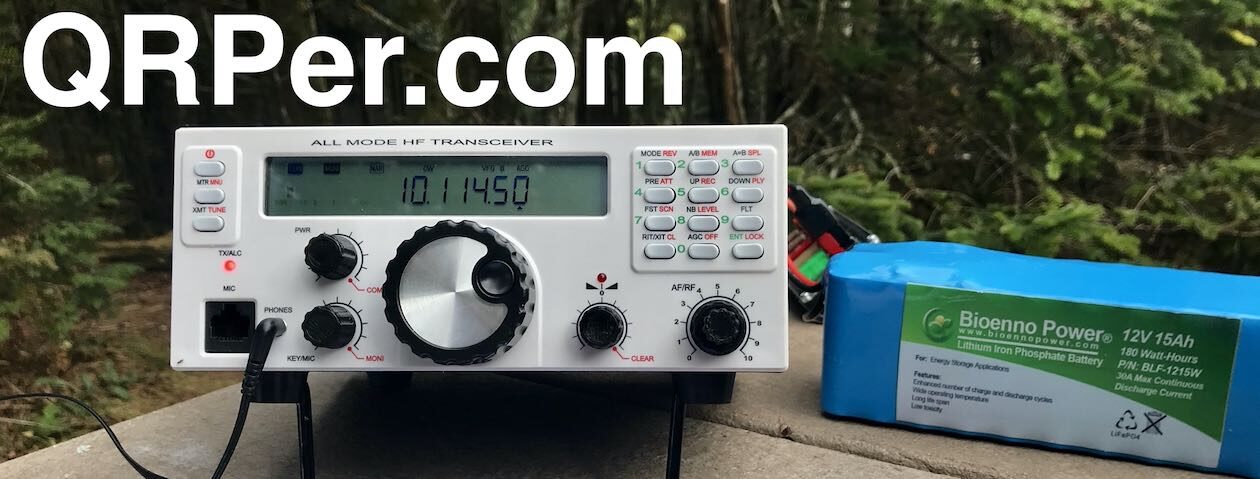If you’re following the new Xiegu X6200 closely, you might recall that I took a prototype version of the radio out two weeks ago for a POTA activation. Propagation was so challenging–as in, a complete radio blackout in North America due to an X-Class flare–it took about 90 minutes of calling CQ POTA to snag the ten needed for a valid park activation.
I had planned to post the activation video on YouTube, but learned shortly after the activation that this particular unit was a proper prototype instead of an early production run radio. This is a detail I misunderstood prior to the unit shipping.

I only shared the 2+ hour video to Patreon supporters, but not on my YouTube channel for this reason.
Production
 This past weekend, I received a second Xiegu X6200: this time, a production run unit!
This past weekend, I received a second Xiegu X6200: this time, a production run unit!
Again, this unit was supplied to me on loan by Xiegu via their distributor, Radioddity who (in the spirit of full disclosure) is also a QRPer.com sponsor and affiliate.
[Note: Also check out Steve’s channel if interested in the X6200. He’s been testing power output, OS accessibility, and other aspects on the bench.]
POTA Time!
Two days ago–Tuesday, June 11, 2024–I took the new X6200 out for a POTA activation on the Blue Ridge Parkway (US-3378).
 I had a couple of hours that morning to fit in the activation, including a round trip from the QTH. The best site for a quick activation was the Folk Art Center picnic area.
I had a couple of hours that morning to fit in the activation, including a round trip from the QTH. The best site for a quick activation was the Folk Art Center picnic area.
Thanks to the early hour, there was no competition for picnic tables.
 I decided to pair my PackTenna 9:1 End-Fed Random Wire with the X6200. This provided a chance to test the ATU with a readily matchable antenna (in the future, I’ll make it sweat a bit more by using a transformerless random wire antenna).
I decided to pair my PackTenna 9:1 End-Fed Random Wire with the X6200. This provided a chance to test the ATU with a readily matchable antenna (in the future, I’ll make it sweat a bit more by using a transformerless random wire antenna).
 This production run X6200 has the same firmware (version 1.0) as the prototype, but the hardware has received noticeable updates. I spotted two changes–one cosmetic and one that had a positive impact on performance–almost immediately.
This production run X6200 has the same firmware (version 1.0) as the prototype, but the hardware has received noticeable updates. I spotted two changes–one cosmetic and one that had a positive impact on performance–almost immediately.
In the activation video below, you’ll see that I spent a few minutes doing an overview of the X6200.
One of the first things I did was set up the X6200 for CW Message memory operation. I demonstrated (after a bit of head-scratching) how to input the CW message using the X6200’s built-in on-screen keyboard. (If the CW Message Memories confuse you, check out the short primer in my previous post).
Gear:
 Note: All Amazon, CW Morse, ABR, Chelegance, eBay, and Radioddity links are affiliate links that support QRPer.com at no cost to you.
Note: All Amazon, CW Morse, ABR, Chelegance, eBay, and Radioddity links are affiliate links that support QRPer.com at no cost to you.
- Xiegu X6200 via Radioddity (Save 5% off purchase amount when you shop with our affiliate link) and via Amazon.com
- Packtenna 9:1 UNUN Random Wire Antenna
- ABR Industries 25’ RG-316 cable assembly with three in-line ferrites (Use Coupon Code ABR10QRPER for 10% Discount!)
- Key cable: Cable Matters 2-Pack Gold-Plated Retractable Aux Cable – 2.5 Feet
- Begali Traveler
- GoRuck GR1 USA
- Weaver arborist throw line/weight and storage bag
- GraphGear 0.9mm 1000 Automatic Drafting Pencil
- Rite In The Rain Top Spiral Notebook
- Camera: DJI OSMO 4 action camera with Joby Telepod Sport Tripod
- DJI Wireless Microphones
On The Air
 The last time I hopped on the air with the X6200, it was proper work making any contacts. It was a struggle and it wasn’t the X6200’s fault. It was our local star!
The last time I hopped on the air with the X6200, it was proper work making any contacts. It was a struggle and it wasn’t the X6200’s fault. It was our local star!

I decided to start on 40 meters since it was still mid-morning. After calling “QRL?” and hearing no reply, I pressed the second CW message memory button where I loaded “CQ POTA DE K4SWL” and the radio started transmitting. Continue reading The New Xiegu X6200: First POTA activation in CW with a production unit!























































































































